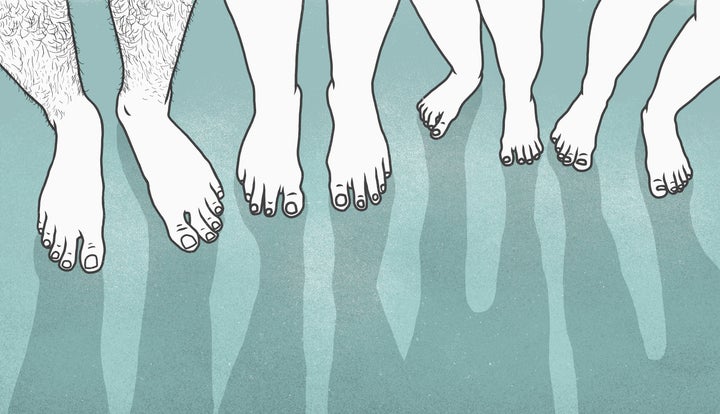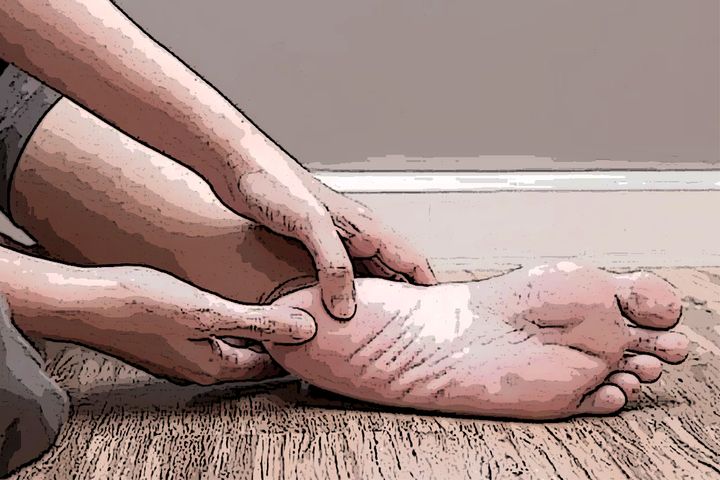You stir from a great night’s sleep and slide out of bed, only to feel a stabbing pain in your heel as your foot touches the floor. You haven’t stepped on anything sharp, so what’s happened?
Plantar fasciitis is the rather unusual name given to a condition characterised by pain in the bottom of the foot, around the heel and arch. The area can be tender to touch or swollen, and it’s usually at its worst after getting up in the morning, sitting down for a while or walking a long distance.
The pain may ease as you move about or exercise – and for most people, it will get better within two weeks. But for others it lasts longer and can require medical attention.
The condition is fairly common, but many don’t know what it is or how it’s treated. Here’s everything you need to know.

What causes plantar fasciitis?
Podiatrist Emma McConnachie says the issue develops when the band of tissue that runs across the arch of the foot down to the heel area becomes inflamed.
“It’s part of the foot’s shock absorption system and it can become damaged from repetitive use, trauma to the area, or something as simple as having walked on uneven ground,” McConnachie, a College of Podiatry member, tells HuffPost UK. “It can also be triggered by prolonged stress on the fascia [the ligament connecting your heel to the front of your foot], more commonly seen in morbid obesity.”
Podiatrist Steven Thomas, from Podogo clinic Wimpole Street, says plantar fasciitis is usually classed as an “overuse” injury. “Usually my patients develop it after suddenly increasing activity levels,” he says. This could be training for a marathon, joining a gym or simply walking more.
It’s also exacerbated in people with flat feet.

How is it diagnosed?
If the pain doesn’t improve within two weeks, you should see your GP. You’ll be asked about the history of the problem, says McConnachie, and undergo a physical examination of your foot to rule out other causes of the pain. “Not all heel pain is plantar fasciitis and the treatment will be different for different causes,” she explains.
In some cases, the podiatrist might touch your heel to see if it hurts and ask you to pull your toes pack to tighten the fascia, which they then press. They may use ultrasound imaging to measure the thickness of the fascia – more than 4mm in thickness is usually indicative of plantar fasciitis, says Thomas.
What’s the best way to ease the pain?
If you’re diagnosed with plantar fasciitis, there are things you can try at home to ease the pain. These include: wearing supportive shoes with good arch support, such as trainers; rolling your foot over a tennis ball to help stretch out the fascia; and using a heel cushion, available in pharmacies. Gentle foot exercises and swimming might also help.
The NHS recommends raising your foot on a stool when you can, putting an ice pack in a towel and applying to the painful area every two to three hours, and taking paracetamol (not ibuprofen) for the pain. Don’t walk or stand for long periods of time, it advises. You should also avoiding wearing high heels, tight pointy shoes, flip flops and backless slippers.
Treatment is all about managing both the mechanics of the foot and treating the area, says Thomas. In acute episodes, a steroid injection might be used to reduce inflammation.
“People usually make a full recovery but there is normally a mechanical reason why someone develops plantar fasciitis,” he adds. “It’s therefore important to see a podiatrist who can not only treat you, but figure out the root cause, to help prevent recurrence.”
To find a registered podiatrist visit www.cop.org.uk/find-a-podiatrist or check with your local NHS about access criteria for its podiatry service.